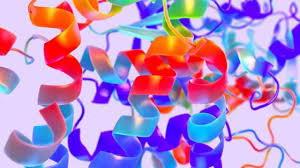Source: intallaght.ie
Proteins are fundamental molecules for life and are able to perform many functions, from creating structures to being catalysts for chemical reactions. Scientists and engineers, for years, have been looking for a way to create new proteins and make them perform new tasks. Thanks to machine learning the target seems close.
Researchers from the Pritzker School of Molecular Engineering (PME) at the University of Chicago developed an artificial intelligence that uses machine learning algorithms (which you can learn more about here) to design new proteins.
Taking advantage of the huge databases on proteins, created starting from the decoding of the genome of many living species, scientists have found a relatively simple rule for building new proteins. When they produced them in the laboratory, the researchers observed that they are able to rival those produced in nature.
“We have always wondered how a relatively simple process like evolution has created high efficiency materials like proteins, ” says Rama Ranganathan, professor of the biochemistry and molecular biology department at Pritzker Molecular Engineering. “We have found that the genome contains a huge amount of data on the basic structures of proteins, we are now able to use the rules of nature to create artificial ones. ”
Proteins are composed of thousands of amino acids and the composition of the chain defines the structure and function of the protein, also very specific such as turning genes on and off. However, understand how create a sequence that leads to a new protein, which can perform new tasks, is very complicated. Ranganathan and his colleagues have spent the past 15 years analyzing the data contained in the various genomes and have discovered a great deal of information on the basic tasks of these molecules, and have used them to “feed” an artificial intelligence.
The developed model showed that it is sufficient to maintain the position of certain amino acids and the correlations in the development of couples, to be sure that the new protein has the same functions as the family you want to imitate.
“Generally we think that to create something, you first have to deeply understand how it works, ” explains Ranganathan. “But if we have enough data, we can use machine learning methods to build the fundamental rules, even without understanding how it works or why it is. ”
The research team created a artificial genome that encodes the proteins, they inserted it in some bacteria to verify if they were able to produce them independently, a test passed with extreme success.
Since the rules for design are few and simple, they allow the creation of a huge number of proteins. This goal will, in the future, allow us to build very specific proteins such as fighting diseases, capturing carbon dioxide, destroying plastic. The answer to many Humanity problems could be a protein.
